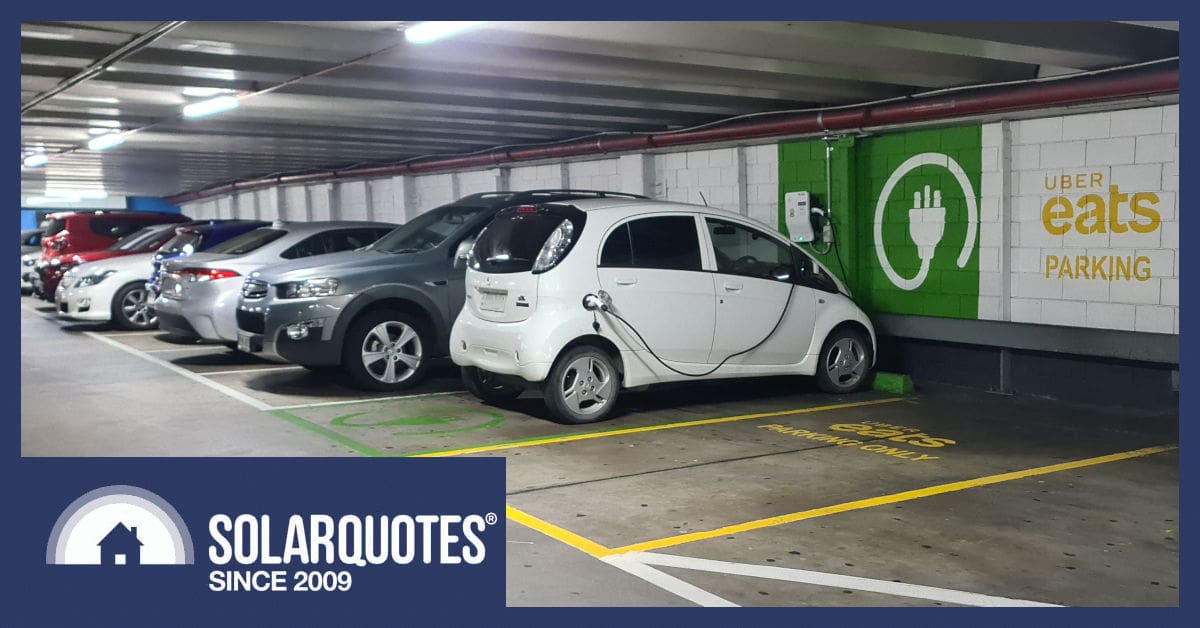
Are you considering getting an EV but are overwhelmed by the challenges of strata charging? Fear not! Here’s how to overcome each challenge…
Challenge #1: Convince The Body Corporate You Won’t Burn The Place Down
The real challenge can lie in the fixed or fearful mindsets of decision-makers within your strata committee.
Sadly, cultivated conflict, clickbait, sensationalism, and not-so-funny memes often prevail in today’s social media scene. But the disinformation and shock jocks are being called out more often.
If your neighbours are the kind who read newspaper, or listen to a wireless, then you may have to gently educate them on the risks associated with EVs in our digital world. For example, the 120 EV fires reported in the same year 10 million EVs were sold, or that an ICE car is 20 to 100 times more likely to catch fire than an EV. So, whilst nothing is 100% safe, the more EVs you have in the parking garage, the less likely you are to have a fire down there.
For those needing help dispelling myths about safety, I’ve gathered some reference material you can click on here to help explain to the sceptics.
Ironically, even though horses aren’t an essential part of transport anymore, even today, haystack fires can be as difficult to manage as battery fires.

One of the country’s largest agricultural insurers, WFI Insurance, says it has paid out $8 million in claims for haystack fires in the past five years. image credit ABC Rural
Challenge #2: Rating Your Installation’s Max Power Demand (kW)
This is where it gets interesting because whether it’s a single house or a high rise, the whole installation will be designed with a Maximum Demand Calculation. There are standards dictating how big the cables and supply infrastructure must be for the appliances, lights, and power points you have.
For example, a domestic house with twenty 10amp power points can be allowed only 10amps total in the supply calculation, while cooktops rated at 40amps peak will be deemed a 20amp calculated load. Again, the rules are different for multi-dwelling and industrial buildings.
The logic goes that your phone charger uses next to nothing, you only own one 8.5amp/2kW blow heater, and the stove isn’t used for hours on end with every hotplate maintaining a rolling boil. In other words, there is diversity in these loads.
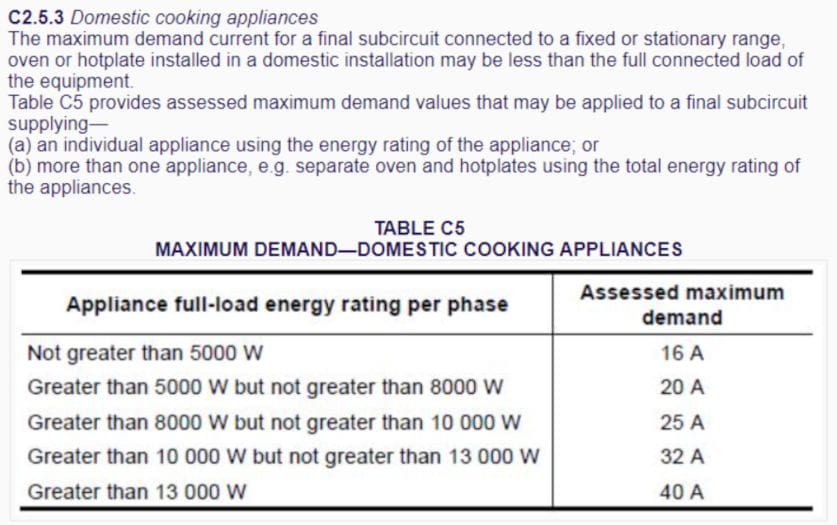
So many electricians forget this knowledge nugget.
However, a storage hot water service is a different matter. It could run for 4 hours straight, so it’s calculated at full connected load. Your average 3.6kW hot water tank uses 15amps, and this is the kicker: a single-phase car charger is generally 7kW, so it uses twice the current for twice as many hours.
The upshot is that car chargers could be assessed as 100, 90, or 75% of the sticker rating, depending on the number of units in your block. It’s a significant amount of power, something the troglodytes have been clutching their pearls about for a while now.
There are off-the-shelf answers, though, and the concept of sharing the available power and reducing peak demand isn’t new. Grid operators have been dealing with it for years and are preparing for yet more as we electrify transport.
A Maximum Demand Calculation is not a DIY task, but it’s one of the first things a good installer will do, as it informs every other aspect of the design from cable upgrades to hardware selection.
Challenge #3: Converting Existing Power Sockets Cheaply
If installing proper, 7kW hard-wired EV Chargers is out of the question right now, but you already have some regular sockets in your parking area, I have some good news.
I have been charging EVs for years, using nothing more than a standard 10amp power point. You can use existing infrastructure and satisfy the bean counters with Alchemy Charge. By scanning a QR code & plugging in, the energy will be billed back to you. Portable 2kW Type 1 EV chargers will give you 10 – 15km range for every hour plugged in, which is enough for most people most of the time.
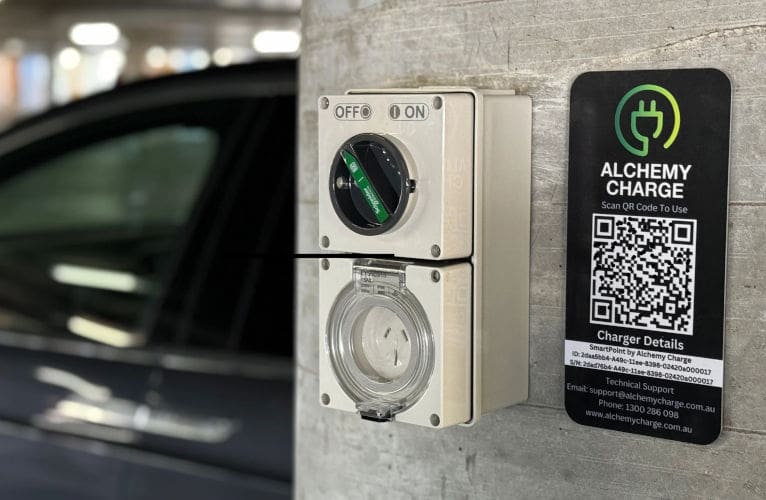
I wish I’d thought of this idea
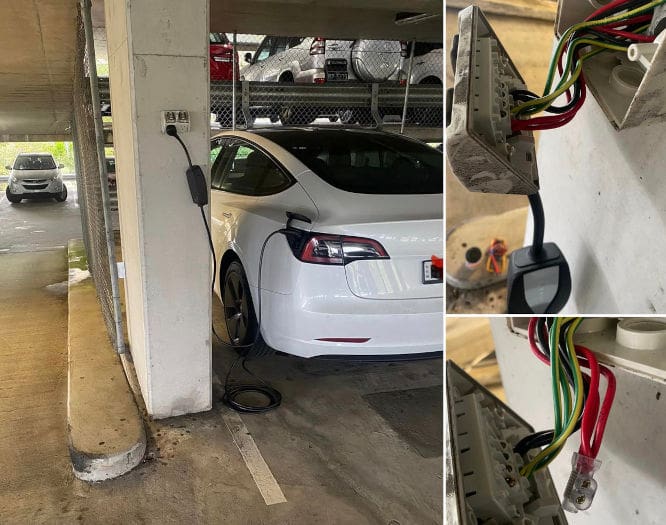
It’s a shame that some car park operators are so short-sighted that they disable GPOs like this instead of looking to a solution like Alchemy Charge.
Challenge #4: Installing Proper EV Charging
Tesla’s hard-wired EV charger (AKA the Tesla Wall Connector) is popular, reliable and relatively cheap. Unfortunately, they aren’t very smart unless they are charging a Tesla car1 so I’d recommend looking to another hardware vendor for your EV charging stations.
Depending on the body corporate’s stance, your options may include wall-mounted or pillar-type charging stations. While tethered leads offer convenience, asking your residents to bring their own cable could avoid damage and ensure they are long enough to reach each car’s charging socket no matter how they like to park.
Smart, hard-wired chargers can connect directly to the communal switchboard without needing extensive wiring to each apartment’s meter. Activation is straightforward via an RFID card or a smartphone app, and energy usage is conveniently added to your personal bill.
When installing new circuits, it’s essential to consider how many chargers the infrastructure can support (see Challenge #2). Fortunately, the charging systems are designed to manage the building’s maximum power demand, ramping down the charge rate of all the chargers in real-time to ensure they don’t overwhelm the main supply. Solar power can supplement charging during the day, while nighttime might mean slower charging if many cars need power concurrently.
To compare the features and prices of different wall chargers available in Australia, have a look at our EV charger comparison table.
Challenge #5: Network Requirements
You’ll need connection approval from the local DNSP (the poles and wires people), and they will likely require an internet connection for what they call DRM or Demand Response Management. This is a fairly new space, but for instance, South Australia ran a trial in 2023 where they paid 30 cents per day to occasionally control your car charger and learn how you use it.
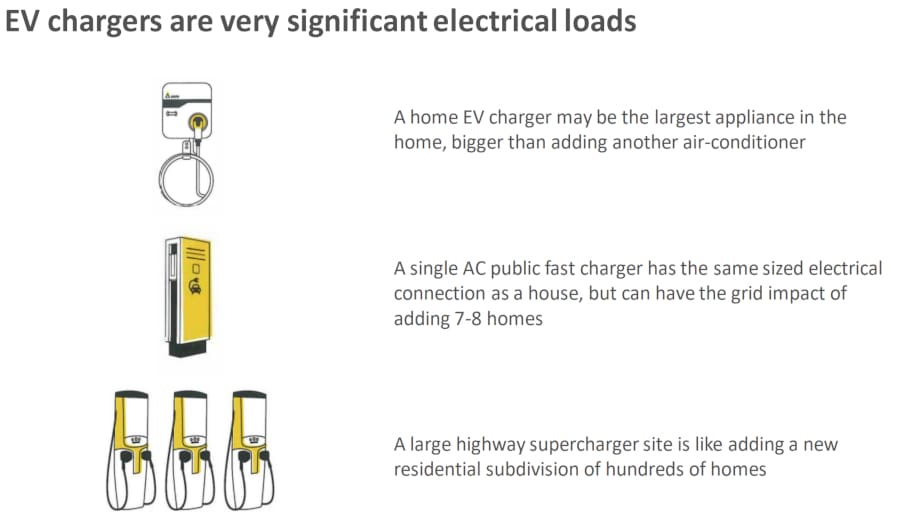
image credit: SAPN
Ronald is currently researching network requirements for each DNSP – watch this space.
Getting It Done
In the future, chargers will be bidirectional. You’ll pick up energy for cheap during peak sun hours when parked at work, drive home, then siphon that energy off, lowering your bill when peak prices hit in the evening. It’s a transformative approach to energy consumption and cost savings, but it’s not something you should wait for.
Strata EV charging technology is ready to go.
It’s a reality waiting for you to make the first move. Of course, SolarQuotes is here to connect you with expert installers who can tailor an EV charging solution to fit your specific needs.
Footnotes
- Tesla chargers can handle individual billing if the EV driver has the Tesla app and a Tesla account, but they can’t control the charging unless connected to a Tesla car, as Tesla’s architecture uses the car to control the charging, not the wall charger ↩

 RSS - Posts
RSS - Posts



Thanks for that AB. Is it fair to assume that the cabling for 7kw charger is different to what one might install for even say a 15A outlet?
I am considering having a 15A outlet installed jn my park bay, as have BC approval for a GPO to be wired directly to my meter; it’s close by and common practice in my building for GPOs to be installed this way.
Should ask electrician to run cable for future upgrade to 32A in case it is ever a government do you think?
AN ALTERNATIVE : I have proposed an alternative to Owners Corps that solves many issues. The solution is to install a normal 7 kw charger with a tethered cable BUT have the supplier set the internal output of the wall charger to 10 amps (2.4 kw). This immediately solves:
(1). LOW POWER: The power required is about what a toaster uses. So there is no need for heavier wiring or heavy 32 amp circuits
(2). NO WIFI NEEDED: No WiFi is needed as many apartment car parks have no WiFi and often no 4G/5G phone coverage
(3). SAFETY: The charger outlet cannot be used by e-scooters which are the culprits in Lithium Ion battery fires
(4). SIMPLE BILLING: The Owners Corp simply bills the car spot user $60 per month. No need to meter usage and integrate billing etc. I have a 100 kw battery in my EV and travel 2,000 km per month. I have almost never exceeded $60 pm cost charging at home on regular electricity rates. So billing is really simple.
In my case the wiring is back to my meter. If the charger is to be limited to 10A then might as well install the 10A GPO and use the “granny charger”, which is my intention, or at least a 15A GPO with a 15A EVSE. My thoughts re 32A cabling is about future proofing. Would obviously be an overkill in the present.
Managed trickle charging to not overload the incoming supply and avoid expensive mains upgrades is the win. Alchemy as you mention and other systems like Ready Steady Plug will get most buildings over the line. Shame the NSW EV Ready Buildings grant discounts L1 charging.
Great article! Word of warning on using existing GPOs, make sure it’s a dedicated circuit or you’ll flip a breaker if someone is using another GPO on the same circuit. We found most installed in basements are installed in series.
It’s not always the “ …the fixed or fearful mindsets of decision-makers within your strata committee”
As a committee member and a professional electrical engineer, I accept your arguments of fixed thinking. However, our committee’s concern is not the risks, perceived or otherwise, but the likely future attitude of building regulation authorities and or insurance companies that may impose expensive retrospective changes to existing fire and safety systems and huge increases in insurance premiums.
Until regulatory bodies can be urged/convinced to give some definition to likely future approaches to EV charging, strata committees are entitled to take a conservative approach in protecting the financial interests of their residents.
Your “serve” is better directed to regulators and underwriters!!
Another option is the Power Logger. Uses new, dedicated circuits, up to 4 Power Loggers may be connected to one circuit, costs the Body Corp/ Strata Committee nothing to install, no Body Corp running costs. All costs are borne by the users. Installation done by suitably qualified Electricians. The Power Logger is controlled by phone Application, there is a Web site for users to see consumption and to facilitate payments. see http://www.powerlog.com.au